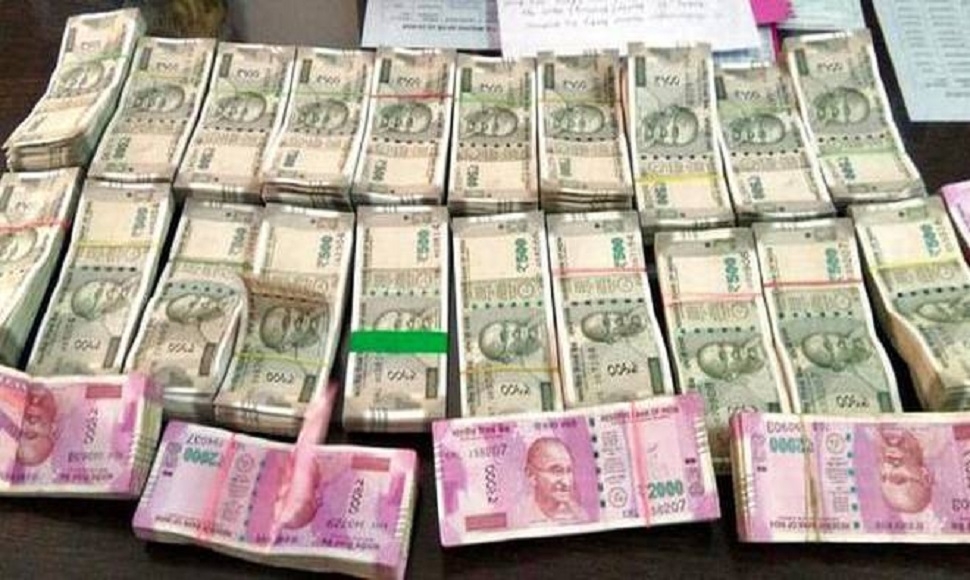Indians could also take the Indian rupee notes when they went on the Haj pilgrimage and exchange them freely for Saudi riyals. Later, the Centre introduced special notes for the pilgrimage with the word "HAJ" inscribed on it. These were called "Haj notes''. This currency was valid till 1966.
This Indian currency was devalued in 1966. This led to several countries in the Gulf withdrawing the use of the Gulf rupee. Gradually, by the early 1970s, all the countries stopped using the Gulf rupee as their currency.
But why was this currency or Haj notes introduced? In 1950s, there was heavy smuggling of gold in India. Due to smuggling India was paying for the illegal import of gold through its foreign reserves. To reduce the strain on India’s foreign reserves, a separate currency was created.
This new rupee note was called as Gulf Rupee and was issued by the Government of India which issued INR 1 note and the Reserve Bank of India which issued rupees 5, 10, 100 notes only to be used as a legal tender outside the country.
These new rupee notes were introduced by a bill passed in both the Houses of the Indian Parliament and with the Presidential assent on May 1, 1959, and were called as the “External Rupee” or the “Gulf Rupee”. This issue of the ‘special notes’ was not a legal tender in India and was exclusively for use in the Persian Gulf.

Ask Anything, Know Better
April 01 RBI एक गैर-लाभकारी संस्था है, फिर उसने 2.3 लाख करोड़ का मुनाफ़ा कैसे कमाया?

March 27 Economic Times : The gross market borrowing of Rs 7.50 lakh crore shall be completed through 26 weekly auctions Read more

February 15 The Emerging Markets (EM) Index is a significant benchmark used to track the performance of local-currency-denominated Sovereign Bonds issued by emerging market countries. The EM Index is designed to provide investors with a representative measure of the fixed-income market within emerging market economies. It includes government bonds issued by various emerging market countries, and its composition may change over time based on eligibility criteria. One of the widely followed indices for emerging markets is the MSCI Emerging...

July 03 What is the SDR? The SDR is an international reserve asset. The SDR itself is not a currency but an asset that holders can exchange for currency when needed. The SDR serves as the unit of account of the IMF and other international organizations. Special Drawing Rights (SDR) was created by the International Monetary Fund in 1969. The SDR serves as the unit of account of the IMF.Though it is not a real currency, it is just a unit of account. What is the purpose of the SDR? The IMF created the SDR as a...

January 06 Business Standard - The Indian rupee, emerging Asia’s worst performer in 2022, is likely to extend losses in the next fiscal year, according to a top private bank in the country.“A substantially wider current account deficit” in the next fiscal year will keep the rupee under pressure, Neeraj Gambhir, group executive for treasury, markets and wholesale banking at Axis Bank Ltd., said in a Bloomberg TV interview. Read more

May 01 Mint - The Adani Group company reported a 67% year-on-year (YoY) surge in its net profit for the March quarter (Q4 FY24), rising to ₹157 crore from ₹94 crore last year same period. Read more

April 28 Mint - On Sunday, Tesla CEO Elon Musk posted a picture with Qiang and said, “We have known each other now for many years, since early Shanghai days.” Read more

April 25 Mint - As market cap fell making shareholders poorer by ₹39,768.36 crore, Uday Kotak holding a 29.71 per cent stake also lost ₹10,225 crore in a day. Read more

April 24 Business Standard - The Reserve Bank of India has asked private sector lender Kotak Mahindra Bank not to issue new credit cards and barred new customer onboarding through the bank’s online and mobile banking channels. Read More

April 23 Down to Earth - Out of a global workforce of 3.4 billion, over 2.4 billion workers are likely to be exposed to excessive heat at some point during their work. Read more

April 22 News18 - Reliance Industries Ltd (RIL) said net profit rose 0.1 percent to Rs 21,243 crore for the fiscal fourth quarter, beating analyst estimates, driven by a recovery in its core oil-to-chemicals (O2C) business. Read more

April 22 Mint - Samsung Galaxy S22 receives a massive discount on Flipkart, now priced at ₹36,999. It features OneUI 6.0, IP68 protection, and 4K selfie camera. The device runs on Snapdragon 8 Gen 1 processor and promises 4 generations of Android OS upgrades. Read more

April 18 CNN - Chaos ensued in the United Arab Emirates after the country witnessed the heaviest rainfall in 75 years, with some areas recording more than 250 mm (around 10 inches) of precipitation in fewer than 24 hours, the state’s media office said in a statement Wednesday. Read more

April 13 Moneycontrol - Nakul Nath, the son of former Madhya Pradesh chief minister Kamal Nath, is the richest candidate contesting in the first phase of the Lok Sabha election, as per Association for Democratic Reforms (ADR). Read more

April 13 Mint- Vodafone Idea will launch a follow-on public offer (FPO) worth ₹18,000 crore next week at a price band of ₹10-11 apiece. Read more

April 05 Mint - Zomato share price has surged approximately 270 per cent over the last year, and the rally of the stock can continue as experts believe the food-delivery company may report healthy Q4FY24 performance, further boosting investors' sentiment about the stock. Read More

April 03 Economic Times : In a recent update from Forbes, Mukesh Ambani, Chairman of Reliance Industries, has secured the top spot as the wealthiest individual in both Asia and India. Read more

April 02 Mint - In the latest addition, a commuter, dubbed "Spider-Man," skillfully navigates above the jam-packed seats, moving slowly above one berth to another to reach the toilet of the train to ease himself. Read more

April 01 Mint - According to stock market oBSErvers, shares of SRM Contractors Limited are available at a premium of ₹126 in the grey market today. Read more

March 29 Forbes : From hidden gems to emerging getaways, here are the top five destinations making waves this year. Read more

March 27 Economic Times : The gross market borrowing of Rs 7.50 lakh crore shall be completed through 26 weekly auctions Read more

March 26 Indian Express - The United Nations Security Council on Monday demanded an immediate ceasefire between Israel and Palestinian militants Hamas and the immediate and unconditional release of all hostages after the United States abstained from the vote. Read more

March 23 India Today : A total of 115 people have so far been killed in the Moscow concert hall attack. Eleven people, including four terrorists, were arrested for the attack. Read more

March 10 CNBC - As per custom, the lemon and other items including fruits offered to Lord Shiva during the Mahasivarathiri festivities observed on Friday night at the Pazhapoosaian temple near Sivagiri village, 35 km from here, were auctioned. Read more

March 05 Apple has unveiled its latest iteration of the MacBook Air, featuring the powerful M3 chip, promising enhanced performance and functionality. The new MacBook Air boasts up to 60 percent faster performance compared to the model equipped with the M1 chip and up to 13 times faster than its Intel-based predecessor. read more
Comments
Write Comment